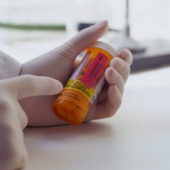
THURSDAY, May 26 (HealthDay News)– Lists of the side effects for prescription medications on drug labels, packaging and advertisements have mushroomed up to an average of 70 per medication, a new study reports.
Cautions about side effects were designed to inform doctors and consumers of potential hazards, but this expansion may have more to do with worries about litigation rather than actual health concerns, say the study authors, who argue the information could be presented much more efficiently.
“Having a high number of side effects on a drug’s label should not suggest that the drug is unsafe. In fact, much of this labeling has less to do with true toxicity than with protecting manufacturers from potential lawsuits,” the study’s lead author Dr. Jon Duke, Regenstrief Institute investigator and assistant professor of medicine at the Indiana University School of Medicine, said in a university news release.
An analysis of more than 5,600 drug labels and more than 500,000 side effects found that prescription drug labels include an average of 70 different potential adverse reactions — a number that jumps to 100 side effects for some commonly prescribed drugs.
Some drugs in the upper range even listed up to 525 reactions.
Duke pointed out that the large number of side effects listed could overload doctors who must sift through this information in order to make informed decisions about medications on behalf of their patients.
For the study, published in the May 23 issue of the Archives of Internal Medicine, the researchers compiled a list of the types of prescriptions drugs that were most likely to have a high number of labeled side effects. These drugs included antidepressants, antiviral medications, and newer treatments for restless legs syndrome and Parkinson’s disease.
Despite the overwhelming amount of information found in current drug labeling, Duke argued that the data could be useful if presented properly.
“With current technology, drug labels could be transformed from lengthy static documents to dynamic resources, capable of delivering personalized patient information. Such labels could take into account the individual patient’s medical conditions and highlight those side effects that could be especially dangerous,” he explained.
“We can’t stop the growing wave of drug information, but we can do a better job of presenting it efficiently to health care providers,” Duke concluded.
More information
The U.S. Food and Drug Administration offers additional information on drug side effects.

